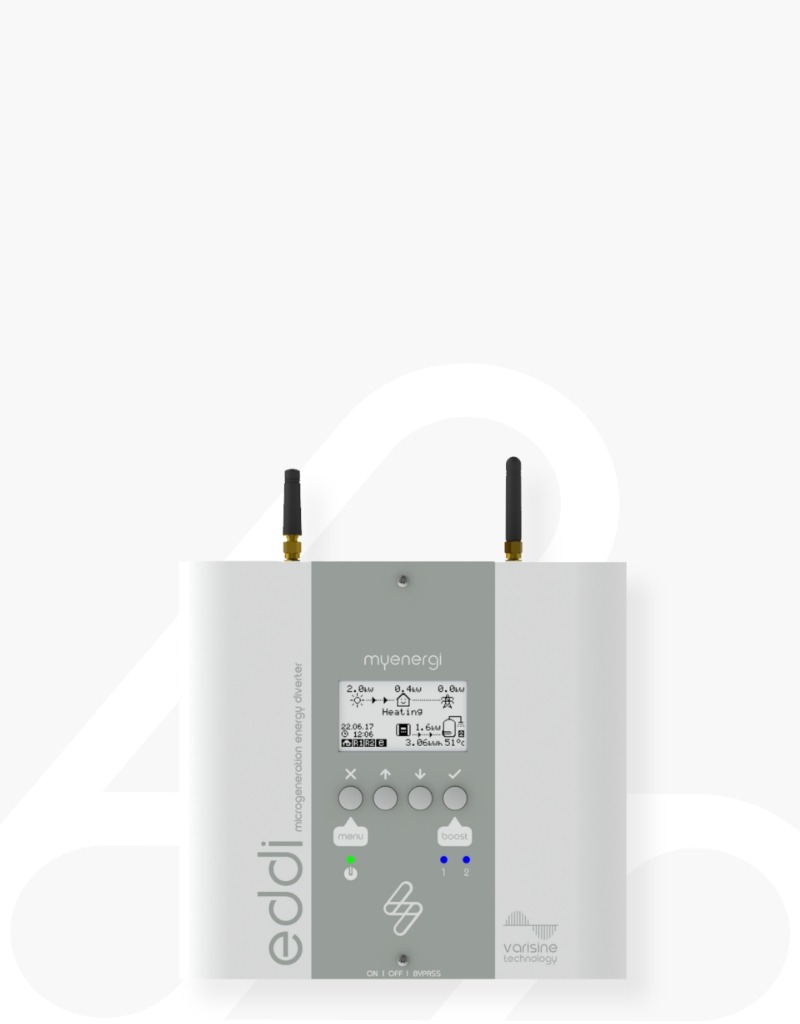Maximising the use of excess electricity with power diverters
Many homeowners with solar installations wonder about the best use of excess electricity. Many report that they either have no control over their own self generated energy or that the returns when exporting it back to the grid are not cost-effective. Others question whether or not the excess should be sent to your immersion, or if there is a better alternative?
Here’s a breakdown of why using this electricity is both efficient and cost-effective.

Feed-in tariffs explained
For homeowners under the Feed-in-tariff (FiT), it’s notable that most don’t have an export metre as part of their solar setup. The government estimates that about half of the electricity generated gets exported. Consequently, they base your payment on this assumption.
However, if you use all the electricity generated at home, you not only receive the full Feed-in tariff payment but also maximise your energy savings.
Get in touch
Solar power diverters
Solar power diverters, sometimes known as “solar PV optimisers”, play a pivotal role in this process. These devices monitor the electricity consumption within the home and compare it with the output from the solar panels. I
f there’s excess electricity being produced, the diverters channel this surplus to the immersion unit. Without these diverters, this excess power would typically go back to the grid. Meet eddi; the myenergi eddi utilises this leftover’ energy, making the most of the 100% green energy.
Rather than exporting it back to the grid, your power generation investment becomes more efficient, by diverting the power back to your heating systems.
Find out more
Debunking the myths around solar power diverters
A frequent misunderstanding is that if a solar power diverter detects, for instance, a 70-watt surplus PV output, it wouldn’t be enough to run an immersion heater, typically rated at 3kW or 3000 watts. This would seemingly mean that an additional 2930 watts would come from the grid, leading to hefty electricity bills.
However, this isn’t how most diverters work. As explained by Jordan Brompton, founder of the eddi power diverter system. “In contrast, heating appliances, such as immersion heaters, are versatile. Even if a heater is rated at 3KW, it can operate at a restricted power, 1.5KW for example, producing half of its rated heat energy”.
The eddi system electronically controls the power supplied to these heaters based on available export power, akin to how one can control water flow using a tap. So, if there’s 70W of available export power, eddi ensures that only 70W flows into the immersion, regardless of its full 3KW rating. This efficient mechanism ensures no additional grid power is needed.
A system that waits for the full 3KW before activating the immersion would be much less efficient, saving only a fraction of the exported power.
Understanding eddi : it’s role and mechanism
Power diverters capitalise on the extra solar energy your PV system churns out. Instead of this energy being sent back to the grid, eddi channels it to warm your home’s water tank. As a result, you maximise your solar PV system’s output, reaping the benefits of a decreased carbon footprint, economical electricity expenses, and promoting an environmentally-friendly household.

Why eddi is the ideal power diverter for your home!
eddi is an innovative power diverter designed to harness any spare energy your solar PV system generates, and use it to warm your water tank. It ensures your household enjoys a consistent hot water supply, utilising energy that would otherwise go unused, adding a touch of ease to your daily routine. eddi seamlessly integrates with the libbi home battery storage and myenergi app, making it a top choice for tech-savvy homeowners. A unique feature of eddi is its ability to monitor your system’s surplus power and adjust the voltage to suit the heater’s requirements.

Can eddi bolster your energy independence?
Aiming for self-sufficiency is a prime focus in 2023. If you don’t have alternate solutions like battery storage or an immersion controller, the solar energy you’ve invested in but are not utilising gets sent back to the grid with minimal compensation.
eddi changes this dynamic, enabling you to be less dependent on the grid. With eddi, you can achieve up to 95% power self-consumption, a significant leap from the 25% you’d get without it. This is all thanks to Eddi’s capacity to utilise every ounce of energy your solar setup produces, ensuring no energy is squandered.
In conclusion, solar power diverters are intelligently designed to monitor and divert electricity based on a home’s consumption and the solar system’s production. These devices ensure that homeowners use their solar-generated electricity efficiently, debunking any misconceptions about their functionality.
Explore eddi for yourself
